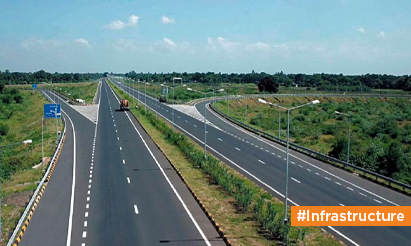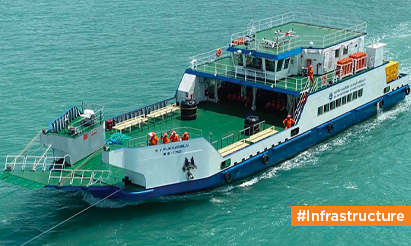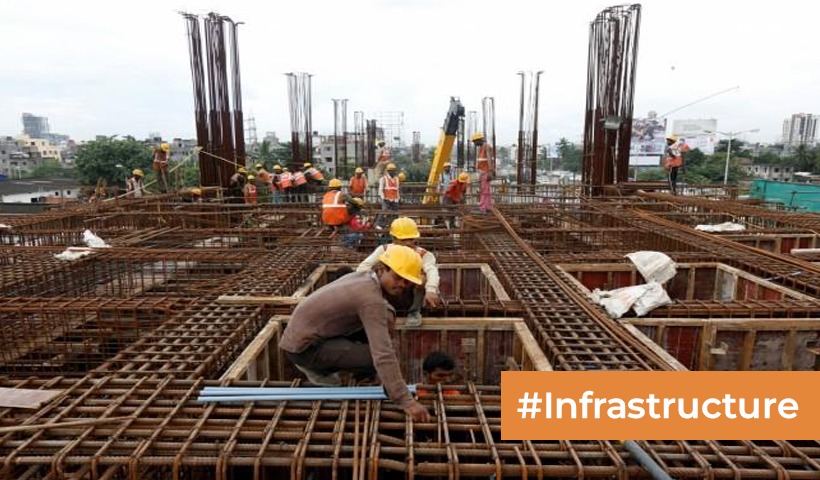INDIA ON THE RISE: INFRASTRUCTURE DRIVERS FOR THE NEXT DECADE
India is on the verge of expansion, with the infrastructure sector playing an important part in the country’s economic prosperity. The administration has prioritised the implementation of measures that would enable the countries develop of world-class infrastructure. The sector encourages the expansion of associated industries such as townships, housing, construction, and building development projects, acting as a driver for economic growth. The infrastructure industry in India is expected to increase at an 8.2% CAGR by 2027. The Government has also earmarked INR 10 Lakh rupees in the Union Budget 2022-23, indicating the need for significant sector improvement.
By encouraging qualitative and time-bound development strategies, India may achieve its aim of being a $5 trillion economy by 2025. To encourage the expansion of the infrastructure industry, the Government of India (GoI) has developed the National Infrastructure Pipeline (NIP), as well as other efforts such as the Make in India and Production-Linked Incentives (PLI) programmes. India aims to invest US$ 1.4 trillion on infrastructure through ‘National Infrastructure Pipeline’ in the next five years. Transportation, power, water, and irrigation have received a substantial portion of infrastructure investment, accounting for more than 80% of total spending. With rising urbanisation, India has seen seismic shifts in its environment and demography, shifting the government’s attention to other areas such as industrial, social, and so on.
Simply put, comprehensive customer service is required to support rapid economic growth, enhanced quality of life, and greater industrial viability, as well as the anticipated and scheduled construction of newer cities over the next decade.
Any new government efforts offer momentum for the development of massive appropriate target. In recent decades, emerging economies have identified inclusive and sustainable industrial development as one of the most effective strategies to accelerate economic growth and wealth accumulation in order to meet larger socioeconomic goals. To achieve comprehensive sustainable development, India would also need to incorporate plans to satisfy its goal to attain a net-zero aim by 2070 in accordance with the global Sustainable Development Goals principles.
Greenfield industries should be established as a new paradigm for development, centered on ESG concepts such as optimum resource usage and management, adoption of cutting-edge technology, inclusionary smart growth, and creativity. At the national level, India’s Industrial Development Initiative is the most significant infrastructure programme aiming at constructing future industrial sustainable cities capable of competing with the world’s top manufacturing and investment centres. This will promote investment, stimulate innovation, provide employment opportunities, and establish best-in-class infrastructure, leading to overall socioeconomic growth to match the bigger national agenda of “Make-In-India”. The initiative will help to accelerate economic growth by encouraging job creation and skill development, hence boosting the sector’s contribution to GDP.
Ultimately, in order for India to increase its economic competitiveness and emerge as a global power, a modern, world-class infrastructure must be developed by integrating all stakeholders into holistic planning and execution in order to achieve productivity improvements and synergies in large-scale project implementation.
Disclaimer: The views expressed above are for informational purposes only based on industry reports and related news stories. PropertyPistol does not guarantee the accuracy, completeness, or reliability of the information and shall not be held responsible for any action taken based on the published information.




